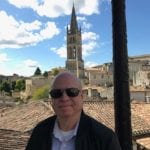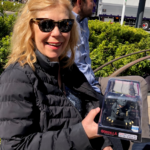Discover Myanmar
To travel here is to step back in time. It is both surreal and traditional. Myanmar (formerly Burma) is fifty years behind. The tourism boycott that persuaded many to avoid this country has been lifted as of 2011. A quasi-civilian government was sworn in, and finally Aung San Suu Kyi was released from house arrest and had gone on with incredible efforts to bring her country into the 21st century! She even was awarded the Pulitzer Prize.
Being here is as if one is in a 4th World Country! It is beyond description and imagination. Soon this will all change as the new government works to change the economy and modernize this wonderful, magnificent little gem.
The people, unlike the brutal regime that controlled them for so many years, are the opposite. The people of Myanmar make your trip fantastic. They are gentle, humorous, engaging, inquisitive, and passionate. Be sure to bring lots of trinkets to pass out. The little girls all want make up, cosmetics, perfume, especially mascara and lipstick. While for the boy’s teen shirts and baseball hats, writing supplies make a huge hit.
As tourists, we encountered men wearing skirt-like longyi and women smothered in thanakha a thick yellowish substance.
White paste made from bark is applied to the face and arms. It has a clay-like appearance and is thought of as a traditional make-up that makes these women so uniquely beautiful. This practice also protects from the scorching sun. Another common sight is the betel-nut-chewing elder people with mouths full of blood-red juice. It has a drug like affect on them.
One of the most fascinating aspects of travel in Myanmar is the opportunity to experience a corner of Asia that, in many ways, has changed little since British colonial times. Myanmar, for instance, has yet to be completely overwhelmed by Western clothing.
It’s also a country of many incredible and sometimes surreal sites. Contemplate the 4,000 sacred temples, rising above the scattered plains of Bagan. We stared in disbelief at the Golden Rock teetering impossibly on the edge of a chasm. We saw multitalented monks who have taught their cats to jump, or feisty “elderly” women whose faces were tattooed with intricate designs.
Bagan is one of the must-see destinations in Myanmar. Bagan has more than 3,000 Buddhist temples. Bagan, formerly Pagan, is the site of the first Burmese kingdom dating back to between the 11-13th centuries, and is a vast site for religious pilgrimages. There are many Buddhist monks everywhere.
Scattered around a 26 sq. km plain surrounding the Ayeyarwady River are the magnificent red brick temples and pagodas left from the religious fervor of the Kings of Bagan dating all the way back to 1057-1287 AD.
In addition to the impressive architecture, inside these incredible temples are colorful murals and exquisite Buddha statues, and from the summit, awesome views showing the immense expanse of the Bagan era temples. To hot air “balloon over Bagan” is a site nothing can compare to. It is spiritual, magnificent, wondrous and breathtaking. To balloon here is worth the trip itself.
There are numerous temples and pagodas throughout Bagan. It is hard to see all of them. However, the Shwezigon Pagoda, and Gu Byauk Gyi, a 13th century temple with exquisite murals of Jataka scenes, and the immediately recognizable Ananda Temple, one of the finest and largest temples with its 170-ft shimmering gold spire and four huge standing-Buddha images and numerous seated figures arranged around the interior gallery, should be on your “must see” list, along with the Htilominlo Temple, the largest temple built by King Nantaungmya in 1218. The temple is known to be the last Myanmar-style temple built in Bagan. (The name is a misreading of the Pali word for ‘Blessings of the Three Worlds’. King, Nantaungmya erected the temple on this spot because it was here that he was chosen, from among five brothers, to be the crowned prince.)
Although Mandalay has a few highlights such as Kuthodaw Pagoda and Mandalay Hill, it is the ancient capitals, battered stupas and sights outside of the city, which are the main attractions. A great way to see the countryside is to take a short cruise on the Ayeyarwady River, which follows the “Road to Mandalay.”
However, the ship only sails seasonally due to the ebb and flow of the river’s heights. It is a simple, popular and luxurious way to see this incredible country.
Formerly known as Rangoon, Yangon, the capital city and the gateway to Myanmar, was founded in 1755 by King AlaungPaya on the site of the small settlement called Dagon. Yangon has a unique charm, with its old colonial buildings, tree-lined streets, bustling local markets, and tranquil lakes. Taking a carriage ride to see the colonial mansions is lovely. There are famous golden pagodas that glisten amongst the trees and building.
We stopped at the Shwedagon Sule, Botataung and Chaukhtatgyi Pagodas. It was a marvel, feeling as if one stepped back in time! Yet the Shwedagon Temple in Yangon, featuring the Shwedagon Pagoda, which is situated on a small hill with its spire rising to a height of 326 feet, is visible from all parts of the city and is considered one of the most “magnificent monuments on earth”. Its stupa is covered with 8,000 solid gold plates and its tips set with diamonds, rubies, sapphires, and topaz. A huge emerald in the middle of the stupa catches the first and last rays of the sun. Eight hairs of Lord Buddha and other relics are said to be enshrined in this pagoda. Prepare to spend some time here to take in its magnificence.
Shwedagon Paya is the most stunning monument to religion in all of SE Asia.
It is almost a religious pilgrimage in the midst of an amusement park, because so much is going on at anyone time there. While visiting, we saw an ordination and fortune telling session. You simply don’t want to leave. For travelers, the accommodations are incredibly fine!
The driving situation is crazy; most likely you will encounter the unique driving situation with right hand drive cars driving on the right side of the road.
We took a sunset cruise on Inle lake and saw the families coming down to spend the early part of the evening, bathing, washing and children playing. There were water bound temples, shore bound markets and floating gardens. The people along the shores of the lake will stay embedded in your memory. Sometimes you can dock and pass out gifts and trinkets to these lakeside villagers.
Many of the activities range from long distance treks in Shan State to diving adventures around the islands of the Deep South. The highlight adventure is floating over Bagan’s temples in a hotel air balloon or admiring the gorgeous scenery from the decks of a riverboat.
Apart from the many Buddhist temples, Yangon has religious sites that are as important to Hindus, Muslims, Jews, and Chinese. There are estimated to be over 135 ethnic groups and many festivals occur throughout the year, so it’s fun to time your trip to coincide with one of these. Mayan festivals occur between January and March; peak season is January with Independence Day, the costumed and drinking festival known as the Manao Festival, the Ananda Festival, which is the biggest religious festival in Began.
June through September is monsoon season, so avoid this time of travel. It is hot in the summer months of March to May, though relatively comfortable. November to January is winter and the best time to visit, although you can expect daily showers.
The famous writer, Rudyard Kipling, described Myanmar as “Quite unlike any place you know about.” A century later Myanmar remains a world apart. If you come to Burma with your mind open, you will leave with your heart full!!!
Contact Raina Ring to learn more about TravelStore’s Myanmar river cruises today!




